The Kinesis Freestyle Edge RGB Gaming Mechanical Keyboard Review: An Ergonomic Masterpiece
by E. Fylladitakis on July 16, 2019 1:30 PM ESTThe Kinesis Freestyle Edge RGB Gaming Mechanical Keyboard
One quick and rather inaccurate way to describe the Kinesis Freestyle Edge RGB would be that it is “a tenkeyless mechanical keyboard that is split in two”. Much like its predecessor, it is an atypical keyboard that cannot be really compared to typical ANSI or ISO layouts.
Further underscoring this, Kinesis even changed the layout of the keyboard in comparison to its predecessor. One of the most prominent changes is the transfer of the ESC key right above the tilde key, where it should be, forcing the designer to combine the Del and Scroll Lock keys into one key. Scroll Lock is a key that is rarely used, so the majority of the users should not care about having to access it via a two keys keystroke. Meanwhile, there are still no Windows and Menu buttons to the right side of the keyboard.
The original version of the Freestyle Edge featured an array of ten extra keys, eight programmable keys for macros/advanced commands and two for function/lighting control. The new version retains all of these keys, plus a large double-sized “game” key above them. This large key used to be the ESC key, which is now moved to the right.
Kinesis implemented a selectable dual-mode for the Fn key. By default, the Fn key operates as on most other keyboards, requiring the user to keep it pressed for the secondary commands of the other keys to function. However, it is also possible to switch the Fn key into a “lock mode”, meaning that pressing the Fn key just once will lock the keyboard into the Fn layer until the Fn key is pressed again. It is possible, via the software, for the user to reprogram any of the keys of each layer individually, including the macro keys, meaning that the keyboard can virtually change to an entirely different layout between the Fn and the top layer with the press of a single button and without switching profiles.
Aside from its unique layout, there are no extra mechanical keys on the right side of the keyboard. However, there are four small surface buttons at the top of the right board. The rightmost button is the “Smartset” button and is used to access most of the keyboard’s advanced features. This includes the special commands printed on the F7-F12 keys, which do not belong to the Fn layer by default but can only be actuated by holding down the Smartset button and then pressing that key. The combination of the Smartset button, Shift key, and the F12 triggers a full reset, bringing the keyboard back to its factory default mode. One needs to be careful with that because everything is stored inside the keyboard so, unless profiles were manually extracted and stored beforehand, hours of programming different layers and long macros can be extinguished in an instant.
The left of the four small buttons is the Profile button (renamed from “layout”, most likely because gamers are familiar with the term “profile”). It allows for users to switch between the first three profiles of the keyboard. The Freestyle Edge supports up to nine profiles though, and the rest are accessible by holding down the Smartset button and pressing a number from one to nine, in which case the keyboard will jump directly to the selected layout. The second button, the Macro button, allows for the quick recording of a macro and assignment to any key. It does not require any software to function and works in all layouts and layers, and on any key. The final button, the Remap button, is very similar to the Macro button, but just remaps a button to any other instead of programming a more complex command.
We should also spend a moment to discuss the keyboard’s wrist rests. Kinesis used to have simple foam cushions in the Freestyle Edge, which were comfortable, but they could get really dirty and would need replacement sooner or later. The company went with a major upgrade here, installing leather-like (probably microfiber) cushions on the Freestyle Edge RGB. Moreover, the cushions are now removable, making it extremely easy to clean them.
Each of the keyboard’s halves has five thick rubber feet attached, plus another two smaller feet can be found on each of the palm rests. The grip on a wooden surface is just right – enough to keep the keyboard from moving unintentionally, yet not high enough to be annoying when the user intentionally wants to move one half of the keyboard. A very simple and quick programming guide is attached beneath the left half of the keyboard.
The left half of the keyboard has a hidden compartment that can be used to extend or reduce the length of the cable connecting the two halves of the keyboard. A simple but cleverly implemented design allows for the cable’s length to be adjusted in steps of 1.5”. Note that, without the optional Lift Kit, the Freestyle Edge does not support any kind of tilt adjustments. Kinesis intentionally does not place any rear tilt feet on their keyboards. Although the vast majority of people are used to them, having a keyboard slope up from the front to back is actually hurtful for your wrists, and that is something that a company focused on ergonomics cannot have.
As expected, the Freestyle Edge RGB is using original Cherry MX switches. Our sample came with Brown switches of the RGB variant with clear bodies. The Cherry MX Brown switch is tactile but with minimal audible feedback, and Kinesis also offers the keyboard with Red and Blue switches as well. Cherry cross-type supports can be found under the larger keys. A bright white metal plate beneath the keycaps reflects and enhances the backlighting colors.
The keycaps of the Kinesis Freestyle Edge RGB are a tricky subject. Technically, all keycaps designed for Cherry MX switch stems are compatible but the layout of the keyboard is not exactly standard. Most of the main keys are standard but the right CTRL and Shift keys are 1.75x (same size as a Caps Lock key). The Spacebar keys are 3.5x wide and it is unlikely that replacements for these can be found at this point of time.
Much like its name suggests, the Freestyle Edge RGB features full 16.7 million color RGB backlighting – at least theoretically, as no human being can differentiate that many colors. Cherry MX RGB switches still have the LEDs at their top side but their translucent bodies diffuse the light around the keycap. The lighting still is brighter at the top of the key, where the main character is, making the secondary characters at the bottom of the keycap barely readable. That is an inherent limitation of the Cherry MX RGB switch design and is not something that can be easily fixed while using these particular switches.
The optional Lift Kit allows each half of the keyboard to “tent”. It is a tilt mechanism but, instead of tilting the keyboard from the rear up, it lifts each half sideways, towards the hands of the user. It has three tilt angles, from five to fifteen degrees in five degrees steps. We should also note that the palm rests are a requirement for the lift kit to be attached. As the lift kit virtually locks on the wrist rest itself, it cannot be used without the palm rests.
Removing the plastic covers of the keyboard reveals two thick steel frames that support the main PCBs and the keyboard’s switches. Everything is very well secured and cleanly routed, without any design or assembly job imperfections that we could spot. A glance on the stamped date reveals that Kinesis had these in the works for quite a while now.
It is also worthwhile to mention that the four short buttons have caps directly attached onto them, much like the keycaps of the standard keys. They are not free-floating or supported by the plastic frame. This approach makes them feel much better to the touch, as the buttons do not wobble at all and they have a respectable key travel, mimicking that of the main mechanical keys.
The heart of the Kinesis Freestyle Edge RGB remains the same as its predecessor. It is the Atmel AT32UC3B0256 microcontroller with a 32-bit, 60 MHz RISC processor. Kinesis probably selected it for its large 256KB integrated flash memory. It is not a very popular microprocessor, but it is more than adequately powerful for an advanced mechanical keyboard. There is also a 4MB onboard memory that stores all of the keyboard’s data, including profiles and macros.


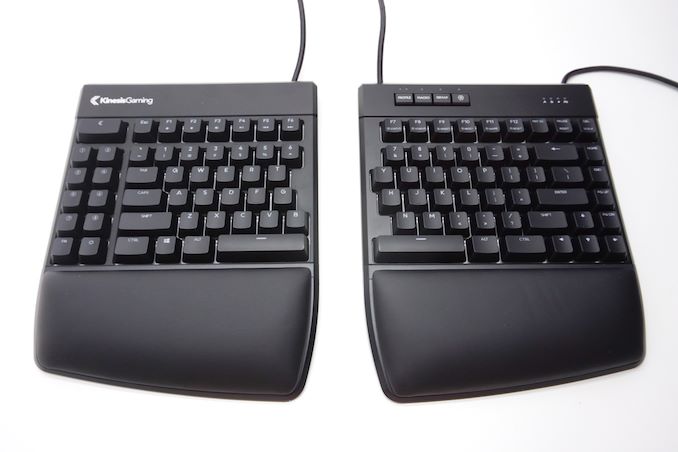
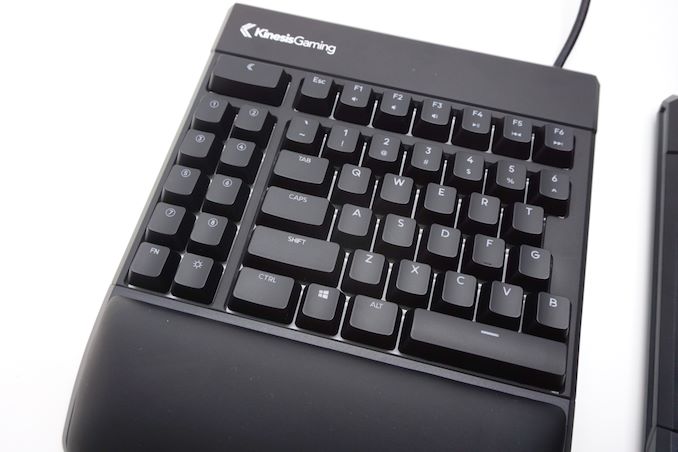

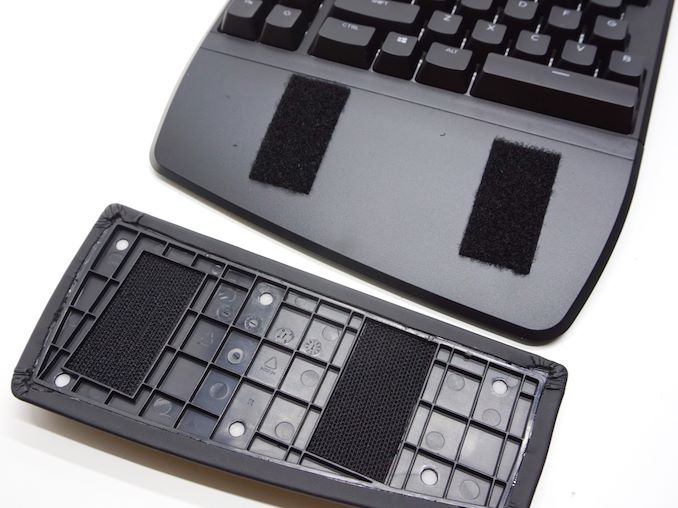


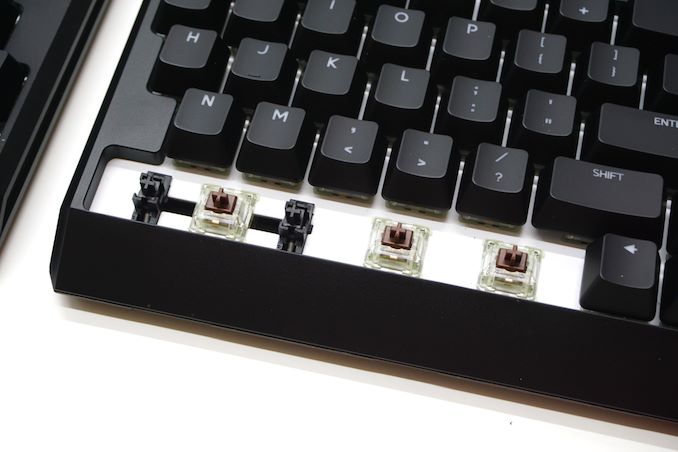

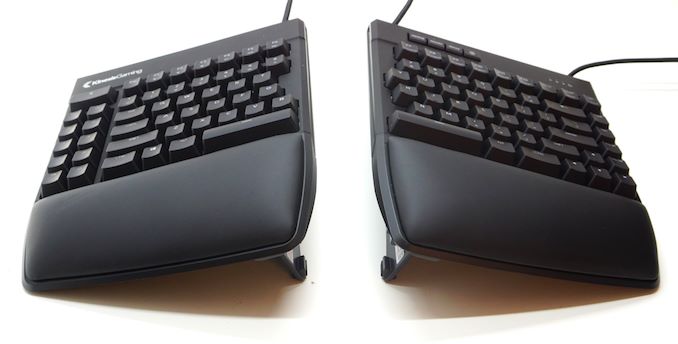
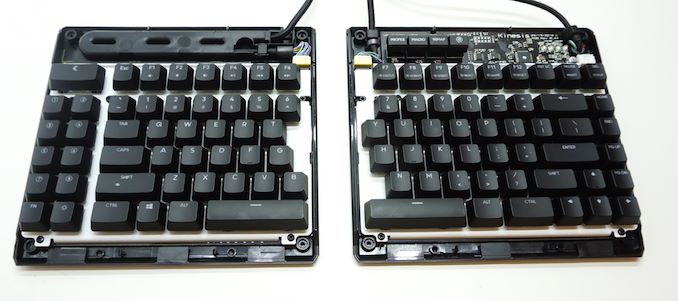

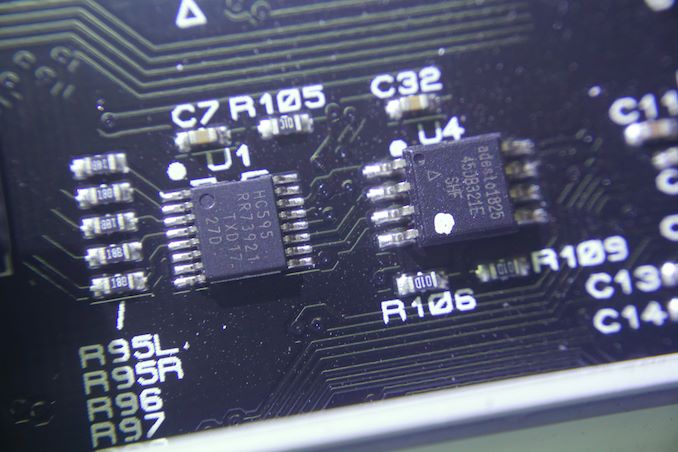








51 Comments
View All Comments
halikarnas - Tuesday, July 16, 2019 - link
Why are titles of Anand articles hyperlinks ? And it redirects to the articles themselves. I like to select the text that I read and I almost always click the titles by mistake while doing it and the page refreshes. It's not convenient.GreenReaper - Tuesday, July 16, 2019 - link
So that you can copy the link and/or go back to the start page in one click, I guess?halikarnas - Tuesday, July 16, 2019 - link
When you click the title of an article the page refreshes, it does't go to the start page. It's simply useless to me, or there is something that I don't understand.Calista - Tuesday, July 16, 2019 - link
Well, it does bring you to the first page of the article. But yes, I agree. I would much rather have it be plain text.Ryan Smith - Tuesday, July 16, 2019 - link
This was the idea behind it, yes.vanilla_gorilla - Tuesday, July 16, 2019 - link
I thought I was the only one. This bugs me, too.waja - Tuesday, July 23, 2019 - link
I'am really happy to know that george earn 3450$ every month at home just working few hours on internet if you interested to join this work so welcome now and copy this link................. www.online-3.comEJ42 - Tuesday, July 16, 2019 - link
This keyboard might not suck if they didn't have the stupid design that connects both halves. Each half should have its own USB port that can be independently run to the computer. The right-half could just have a USB hub on it to let you connect it the way they designed, but allow you to disconnect and run any length of cable you want directly to the PC without having them tethered together.This way, a gamer could just leave the right half completely out of the way without having to find some awkward place to shove it to while gaming.
snowmyr - Tuesday, July 16, 2019 - link
Yeah. I can't stand any keyboard that doesn't let me get rid of the right half of it when gaming. God they suck.Midwayman - Thursday, July 18, 2019 - link
Where are you going to put your beer, right?